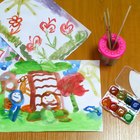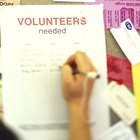
A 2010 survey by the National Network to End Domestic Violence revealed the following statistics: 37,519 adults and children victims of domestic violence sought refuge in emergency shelters or transitional housing in the United States. The lack of shelters for battered women places an economic and moral burden on any given community as well as on state and federal governments. Donor participation and funding through successful grant proposals to foundations and wealthy individuals can help alleviate the problem.Writing a grant proposal for a shelter for battered women should follow the same standards and guidelines as are used for other non profits.
Letter of Intent and Executive Summary
Write a preliminary proposal or inquiry letter, which is usually not longer than 2 to 3 pages, typed on letterhead, and signed by CEO or the Board Chair. This letter incorporates some of the elements of a full proposal and may attach financial statements, tax designation, or annual reports. Provide the information necessary to convince the grantor to consider the proposal for funding.
Write an executive summary. Clearly outline the framework of the proposed project or program. Include the need for the funding requests, the objectives, and methods to implement the project, the total project cost, and the amount applying for. Briefly outline the general needs of the shelter for battered women or a specific project to be funded.
Write an in-depth and objective coverage of the problem or need. With a refuge for battered women, this can be clearly demonstrated. The need for housing is paramount. Mention additional services such as professional counseling, drug and alcohol recovery, and job skills training to help women and children break out of the cycles of addiction and homelessness are of equal importance.
State specific needs for the general maintenance of the shelter, as well as for the abused women who live there. These might include cribs for babies, toys, powdered milk, toiletries, cell phones, DVDs and other daily necessities.
Complete the budget which is the last section of the grant proposal. Attach the previous year's budget, if it exists, to show the organization's difference in expenses and income from one year to the next. Include the expenses anticipated by project's implementation. List each item separately whether it is a new roof or a heating bill. Indicate that other funders have been contacted for the same project and that the total proposal can be divided up accordingly.
Related Articles

Funding for Christian Projects

Grants for Church Vans

Qualifications to Enter a State-Run ...

How Much Money Does a Refugee Get from ...

Federal Government Grants for Child Day ...

How to Write a Proposal for an ...

How to Open a Daycare in North Carolina

How to Apply for a Commercial Loan for ...

How to Get Emergency Cash Assistance

How Do I Find Out the Tax ID Number for ...

How Does Medicaid Work?

New Salon Design Regulations in ...

How to Apply for Welfare Benefits in ...

How to Write Grants for Churches

How to Get Paid to Care for Someone on ...

Grants for Private Christian Schools

How to Write a Letter of Intent to ...

How to Get Senior Low Income Housing ...

How to Start an Adult Day Care Center ...

What Are the Duties of a Church Trustee ...
References
Writer Bio
Cina Coren is a seasoned project manager with experience in consulting, marketing, research, editing and public relations. She has also written and edited for several websites. Coren holds a Master of Arts in mass communication, as well as a Bachelor of Arts in economics and speech.
Photo Credits
BananaStock/BananaStock/Getty Images